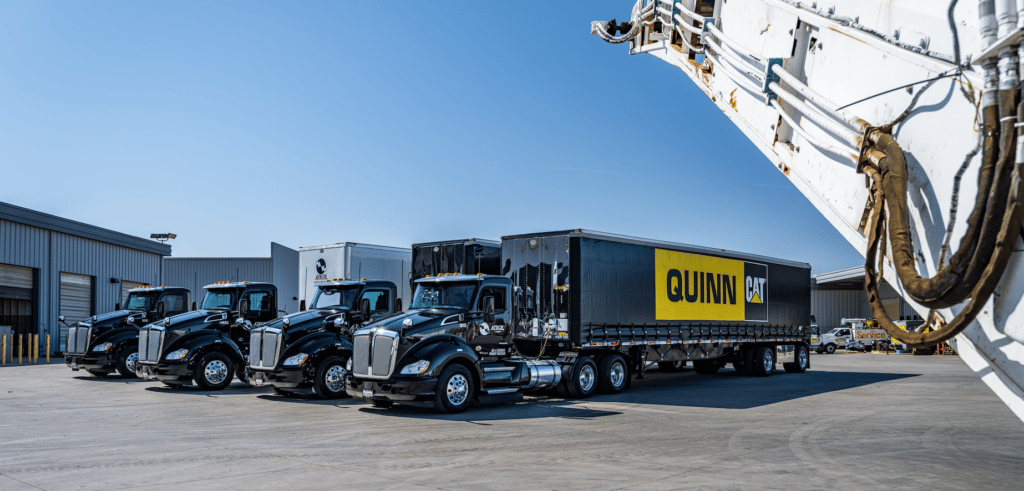
When it comes to the logistics and supply chain industry, it can be hard to fully understand how big the industry truly is. A great place to start is by understanding all the moving parts that come with it.
The logistics industry is more than just obtaining and transporting goods. While it is a broad subject, some key components of the industry include manufacturing, inventory, sourcing goods, transportation, storage/warehouse, IT, security, and the exchange of data. The overall purpose of this very integrated supply chain network is to link producers and consumers using transportation which might include air, express, freight rail, delivery, and truck transport.
The extent to which logistic centers affect businesses and the movement of goods goes far. A successful logistic center will contribute the increased capabilities, reduced costs, improved production rates, and inventory control among so many other things. Logistics helps businesses specifically manage inventory control and warehouse space leading many to see an improved customer experience.
A company’s success can easily be controlled by the advancement of the logistics industry showing how important it truly is. Many also may not realize that logistics also includes overseeing returns to ensure businesses can still gain the most revenue from goods.
To truly understand the size of this industry, you must understand the weight of these individual systems. When it comes to managing materials and warehouse space, it is important to understand that there are usually disparities when it comes to the supply and demand of products. Consumers do not always want products at the same time manufacturers might have them ready. This emphasizes the importance of having large warehouse buildings which sometimes may need specialized storage units and equipment.
When understanding the significance of the role inventory plays, it can be related to storage and warehouse. Inventory becomes essential when it comes to controlling what stock is in the warehouse, where it is located, and identifying how much exactly the warehouse can hold. The process includes having full comprehension of sales data while using mathematics to predict the potential demand for goods by the consumer. There is no straightforward way to handle inventory however, it is useful when managing the goods through the supply chain.
Packaging is also a large component of the industry. Not only is making sure the product is packaged, but that it is done so in a secure way to reduce any discrepancies when it comes to harming the conditions of products. Packaging items into unit loads, also known as unitisation, is an important part of this process. The most convenient way to transport a large number of items of various sizes is in a cube shape allowing them to be packed as near as possible. A lot of money is invested into this process to ensure the most amount of products can arrive safely.
Transportation plays a major role when it comes to the logistics industry. Essentially without the movement of goods and services, there is no successful transaction which means no profit! There is a wide range of transport including freight trains, cargo shipping, air, and on-the-road vehicles. While some products like food may have a short supply chain due to their perishable state, there are many products that travel all around the world. Being able to manage the large variety of products and the various life cycles is an integral role of the transportation component of logistics.
All of these units thrive due to the role of control and information. In order for these procedures to operate correctly, information and control are used to initiate these processes. When it comes to inventory, information is essential while control is used for the organization of both the product and the information itself. When it comes to packaging, control helps throughout the process of knowing what needs to be packed inside the warehouse as well as sorted and prepared for transport. The overall goal of information and control is to organize and build systems that help orchestrate the operations of the logistic system.
In terms of numbers, annually, the logistics industry can range from $8 trillion to $12 trillion according to Statista. In reference to the 2019 economy, the U.S. logistics industry levels at around $2 trillion. There have been forecasts that the total logistics cost globally will exceed a 5% compound growth rate annually through 2023. This prediction alludes to the total market being more than $12 trillion in 2023.
When it comes to the United States specifically, Statista also reports that there was about $1.6 trillion spent on the cost of business logistics. Almost two-thirds of this estimated cost is in relation to transport while inventory was about 30% of that total.
Global trade activities account for a lot of this predicted growth as there are continued advancements in technology, transportation, and trade agreements. While the region of Asia Pacific is foreshadowed to be a leader in the global logistics industry, the United States is following suit. Statista reports that the United States is in the top ten leading global logistics markets reported and the third-highest market in the world for third-party logistics companies. The fast advancement of the logistics industry not only makes for a competitive environment but creates the need for logistics workers to learn to excel in this expeditious environment.

